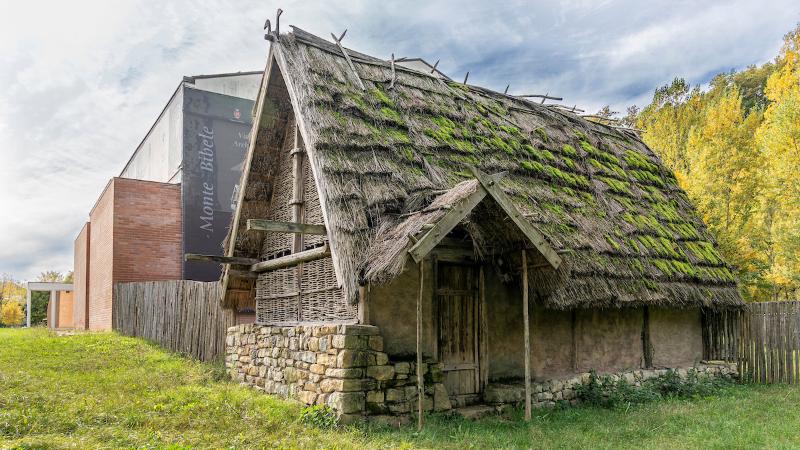The foundation of Kainua, which means "the new (city)", was accompanied by complex religious rituals, as evidenced by a memorial stone with a graffitied cross placed in the center of the city.
It arose on the Pian di Misano and Misanello plateau, in the territory of the current municipality of Marzabotto. It was one of the most important city-states in Etruria Padana, along with Felsina ( today's Bologna) and Spina.
In its early phase, the village was characterized by the presence of simple primitive huts scattered throughout the plateau. In addition to dwellings and arable land, the settlement included temples, a necropolis, a water channelization system, a foundry, and at least one workshop. Later, during the second period, the city of Kainua was founded following Etruscan ritual, which reflected the subdivision of the templum celeste.
The history of Kainua suffered a significant interruption when the city was invaded by the Celts in the 4th century BC. These peoples, descending into the Etruria Padana, gradually occupied the Etruscan cities. Kainua's elevated position turned it into a military garrison to control the Reno valley. The urban layout of the Etruscan city of Marzabotto is organized around a wide north-south street axis, crossed by three east-west roads. A network of minor roads delineates narrow, elongated blocks, within which are located dwellings and artisanal structures. This street pattern provides an orderly and organized structure to the city. The northeastern sector of the city contains two imposing temples dedicated to the main deities of the Etruscan pantheon, Tinia and Uni. These temples testify to the importance of the religious sphere in the life of the community. The presence of sacred buildings also extends to the acropolis hill, which can be reached today through a bridge located on the SS64 Porrettana road. Towards the east and north of the urban area developed the necropolis, areas dedicated to burials. Numerous tombs are still present, some of which are topped by funerary markers characterized by different shapes and materials. These funerary monuments reflect the variety and richness of Etruscan culture in art and rituals related to death.
It is possible to visit the site virtually thanks to the "e-Archeo" project, the 3-D reconstruction of the city is available here, accompanied by audio narration files.
Map
Kainua and the archaelogical area
Via Porrettana Sud 13
40043 Marzabotto
Interests
- Art & Culture







